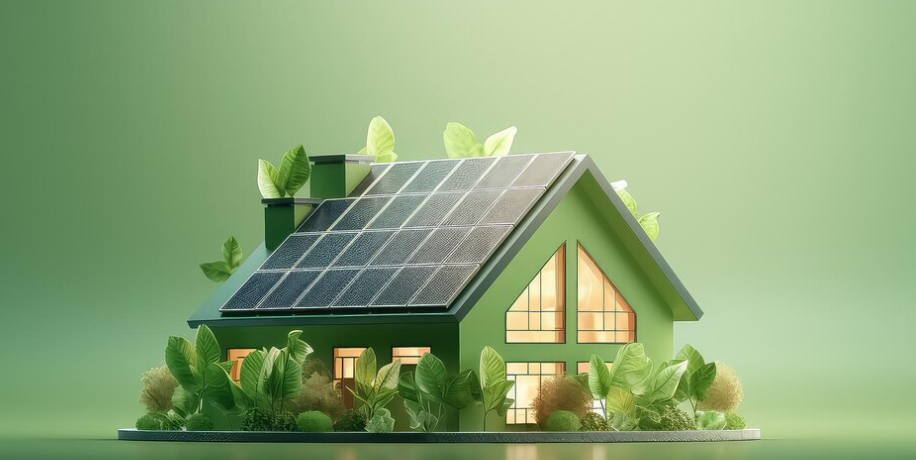
Introduction
Australia is actively working to reduce its carbon footprint, and one of the most effective ways to achieve this is through the adoption of energy-saving appliances. These appliances not only lower electricity consumption but also help mitigate greenhouse gas emissions. By embracing energy-efficient technology, households and businesses can significantly reduce their impact on the environment while also benefiting from cost savings.
How Energy-Saving Appliances Reduce Carbon Emissions
1. Lower Energy Consumption
Energy-efficient appliances use advanced technology to consume less electricity compared to traditional models. By reducing power usage, they directly decrease the demand for electricity generated from fossil fuels, which are a major contributor to carbon emissions. According to the Department of Climate Change, Energy, the Environment and Water, increasing energy efficiency is a key strategy in reducing Australia’s reliance on non-renewable energy sources.
2. Reduced Greenhouse Gas Emissions
The Australian government reports that the residential sector accounts for a significant portion of national energy consumption. Widespread adoption of energy-saving appliances can lead to substantial reductions in greenhouse gases. A study from the Australian Energy Market Operator (AEMO) highlights that energy efficiency improvements could lower emissions by millions of tonnes per year, directly impacting Australia’s carbon footprint.
3. Efficient Resource Utilisation
Modern appliances are designed to use resources like water and electricity more efficiently. For example, Energy Star-rated refrigerators, washing machines, and air conditioners help conserve water and reduce overall waste. The Energy Rating Label helps consumers choose appliances that meet strict efficiency standards, ensuring they contribute to a more sustainable environment.
The Role of Energy Efficiency Policies in Australia
Government Regulations and Incentives
The Australian government has implemented several programs to promote energy efficiency. The Energy Rating Label system allows consumers to compare appliances based on their energy consumption. Additionally, rebates and incentives are available to encourage households to replace outdated, high-energy appliances with energy-saving alternatives. Consumers looking for financial assistance in making these upgrades can explore services like Quickle to access fast and convenient financial solutions.
Impact of the National Energy Productivity Plan (NEPP)
Australia’s National Energy Productivity Plan (NEPP) aims to improve energy efficiency across industries and households. By setting stringent efficiency standards, the government ensures that newer appliances contribute to reducing the country’s overall carbon footprint.
Economic and Environmental Benefits
Lower Energy Bills
One of the key advantages of using energy-saving appliances is the reduction in electricity costs. Households and businesses can save hundreds of dollars annually by switching to energy-efficient models. The Australian Energy Regulator notes that energy-efficient appliances help lower overall energy demand, which in turn helps stabilise electricity prices for consumers.
Sustainable Manufacturing and Disposal
Many modern energy-saving appliances are designed with sustainability in mind. Manufacturers are focusing on recyclable materials and energy-efficient production processes. Additionally, responsible disposal and recycling programs prevent electronic waste from ending up in landfills, further reducing environmental harm. Programs like the National Television and Computer Recycling Scheme help ensure that outdated appliances are disposed of responsibly.
Increased Property Value
Homes equipped with energy-efficient appliances and sustainable features tend to have higher market value. Real estate reports suggest that buyers are increasingly prioritising eco-friendly homes, making energy-efficient upgrades a worthwhile investment.
Challenges in Adopting Energy-Saving Appliances
Higher Initial Costs
One of the biggest barriers to adopting energy-efficient appliances is their upfront cost. While they offer long-term savings, the initial investment can be a deterrent for some households and businesses. Fortunately, services like Quickle offer flexible financial solutions to help consumers make the switch to energy-efficient appliances without financial strain.
Consumer Awareness
Many consumers are unaware of the long-term benefits of energy-saving appliances. Education and awareness campaigns are crucial in promoting the adoption of these technologies. Government agencies and non-profits continue to work on educating the public on the importance of energy efficiency.
Technological Advancements and Market Availability
Not all energy-saving appliances are widely available in the market, and the latest technology can sometimes take time to become accessible to the general public. However, ongoing innovation is helping bridge this gap, and companies are striving to make energy-efficient options more affordable and widely available.
What Australians Can Do to Reduce Their Carbon Footprint
- Switch to Energy-Saving Appliances: Look for Energy Star-rated appliances when upgrading household or business equipment.
- Utilise Government Rebates: Take advantage of federal and state incentives to lower the cost of purchasing energy-efficient products.
- Adopt Sustainable Habits: Simple actions like turning off appliances when not in use and using eco-friendly settings can further reduce energy consumption.
Conclusion
Energy-saving appliances play a crucial role in reducing Australia’s carbon footprint. By improving energy efficiency, reducing greenhouse gas emissions, and promoting sustainable practices, these appliances contribute to a cleaner and greener future. As technology continues to advance and government policies support energy efficiency, Australians have a great opportunity to make impactful changes.
___________________________________________________________________________________________________________________________________
